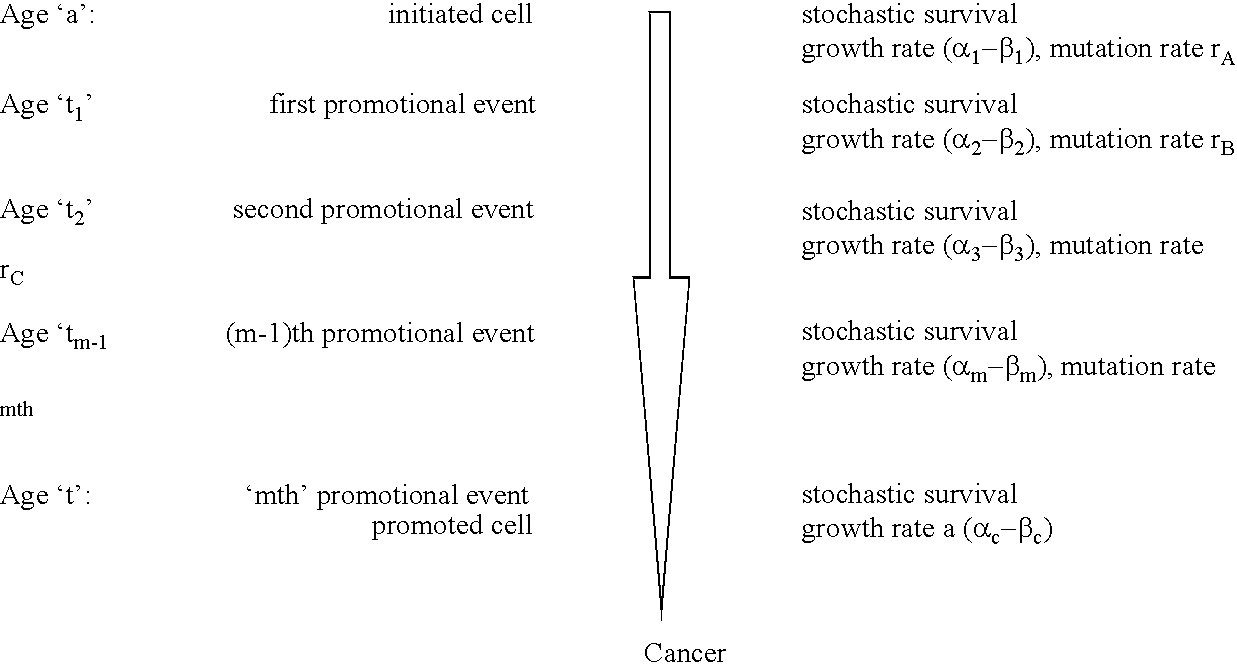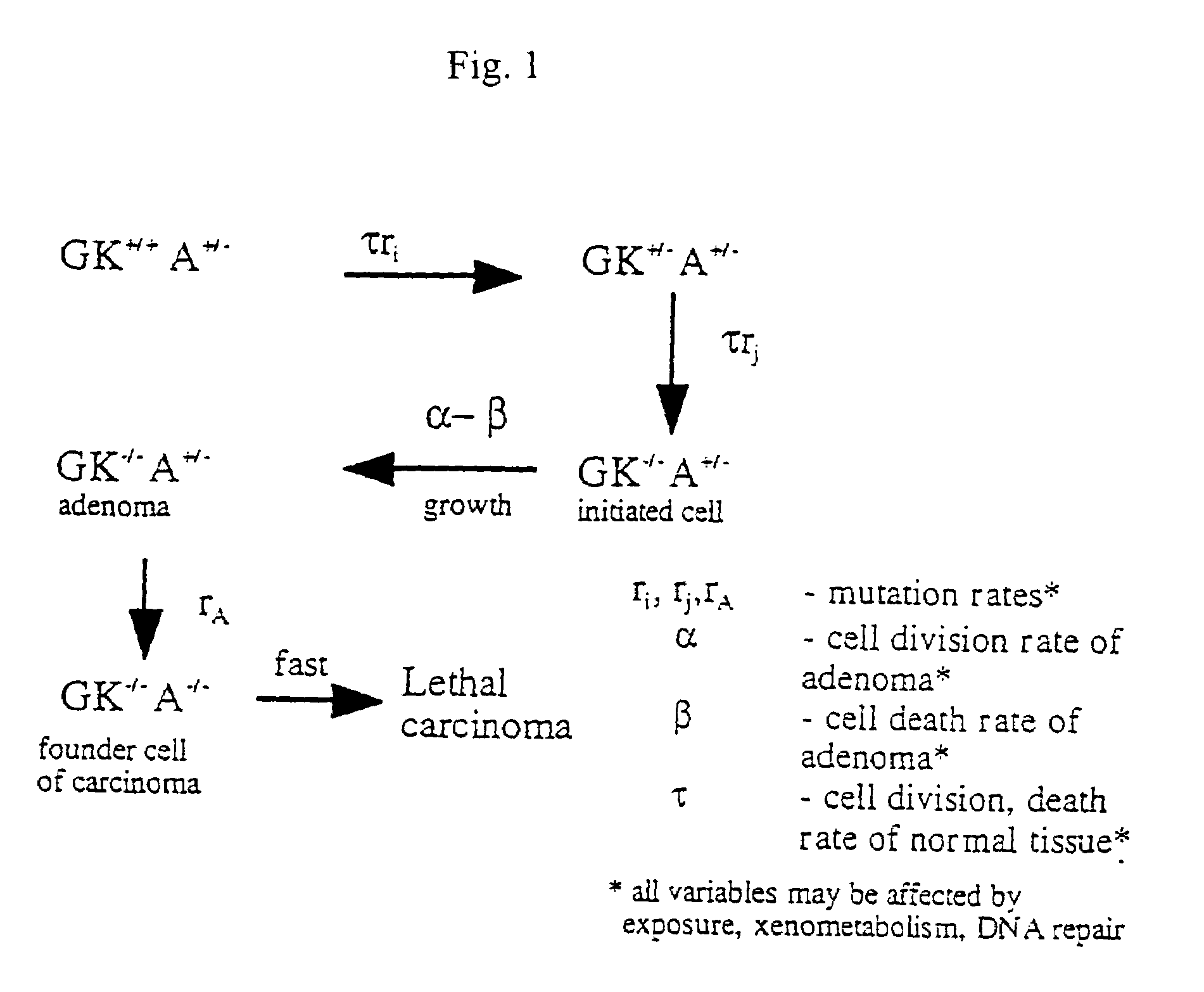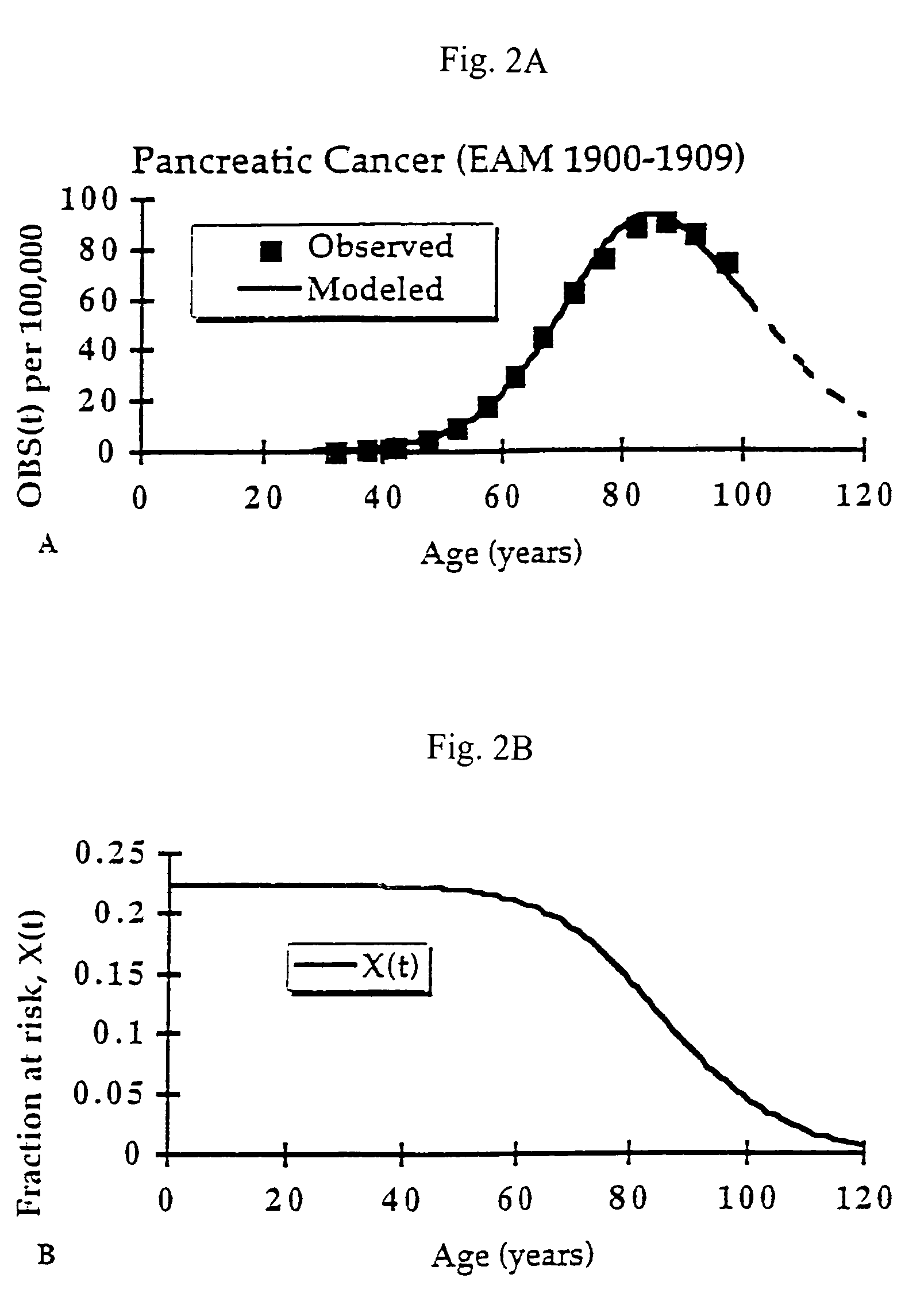Methods of identifying point mutations in a genome
a genome and point mutation technology, applied in the field of genome point mutation identification methods, can solve the problem of high cost of mutation discovery in large populations, and achieve the effect of high performan
- Summary
- Abstract
- Description
- Claims
- Application Information
AI Technical Summary
Benefits of technology
Problems solved by technology
Method used
Image
Examples
example 1
Introduction
[0089]Many inherited mutations are known to cause or predispose people to disease. As the human genome is mapped and sequenced, the number of markers that allow for genome-wide scans has increased dramatically allowing many regions linked to disease to be determined or mapped by exclusion (Nelen, M. et al., 1996. Nat. Genet. 13:114–116; Comuzzie et al., 1997. Nat. Genet. 15:273–276; Marshall, E. 1997. Science. 277:1752–1753). To date, some 1339 genes associated with human disease have been chromosomally mapped (Genome Database, Johns Hopkins University). However, when any long sequences are compared between two randomly chosen alleles in the human population, approximately two variations are found for every 1000 bp (Rowen, L. et al., 1997. Science. 278:605–607). Thus in a large human population any 1000 bp would be expected to display many sequences differing from the canonical sequence. Some of these sequence variants may affect physiological functions such as tumor sup...
example 2
Summary
[0145]The relationship between molecular mechanisms of mutagenesis and the actual processes by which most people get cancer are still poorly understood. One missing link is a physiologically-based but quantitative model uniting the processes of mutation, cell growth and turnover. Any useful model must also account for human heterogeneity for inherited traits and environmental experiences.
[0146]Such a coherent algebraic model for the age-specific incidence of cancer has been developing over the past fifty years. This development has been spurred primarily by the efforts of Nordling (1953. Brit. J. Cancer. 7:68–72), Armitage and Doll (1954. Brit. J. Cancer. 8:1–12), and Knudson and Moolgavkar (1992. JNCI. 84:610–618), whose work defined two rate-limiting stages identified with initiation and promotion stages in experimental carcinogenesis. Unfinished in these efforts was an accounting of population heterogeneity and a complete description of growth and genetic change during the...
case ii
Risk is Conferred by Homozygosity for a Recessive Mutation Non-Deleterious for Reproductive Fitness.
[0282]In the case where primary genetic risk for colon cancer requires inheritance of two recessive alleles of the same gene, neither of which affect reproductive fitness, the fraction of recessive homozygotes would be q2=0.4 and q=0.63 for a monogenic disorder.
[0283]Since these recessive alleles in homozygous or heterozygous form have by our definition no effect on reproductive fitness, that they might have reached so high a fraction in present day populations if the mutation rate for a single gene were about twice the average for all gene inactivating mutations or if the risk were distributed over several different genes. As in Case I, one could not logically deduce which stage of carcinogenesis might be affected by the recessive homozygous state.
Case III: Genetic Risk is Conferred by a Recessive Mutation Deleterious for Reproductive Fitness.
[0284]A third possibility is that risk is...
PUM
| Property | Measurement | Unit |
|---|---|---|
| LOI | aaaaa | aaaaa |
| mitotic time | aaaaa | aaaaa |
| Tm | aaaaa | aaaaa |
Abstract
Description
Claims
Application Information
 Login to View More
Login to View More - R&D
- Intellectual Property
- Life Sciences
- Materials
- Tech Scout
- Unparalleled Data Quality
- Higher Quality Content
- 60% Fewer Hallucinations
Browse by: Latest US Patents, China's latest patents, Technical Efficacy Thesaurus, Application Domain, Technology Topic, Popular Technical Reports.
© 2025 PatSnap. All rights reserved.Legal|Privacy policy|Modern Slavery Act Transparency Statement|Sitemap|About US| Contact US: help@patsnap.com



